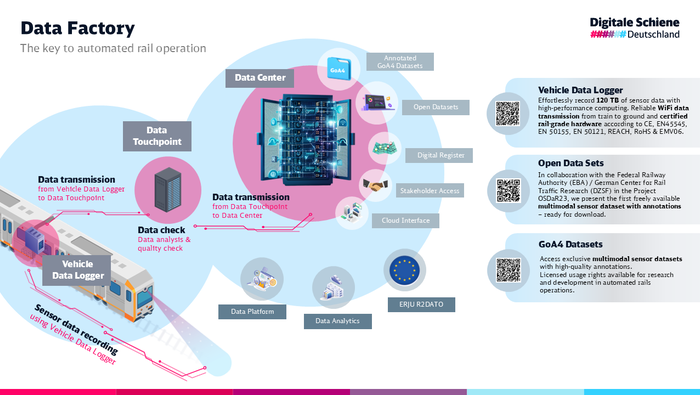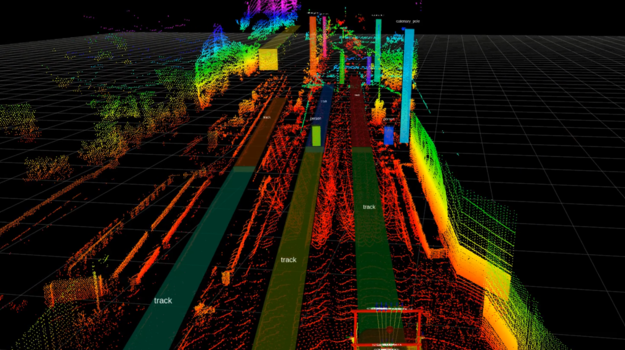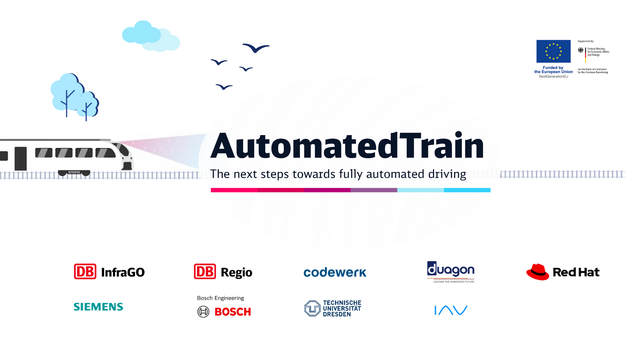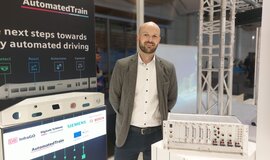
AutomatedTrain: Florian Reiniger talking about the Data Factory – the heart of fully automated rail transport
Developing environmental perception for fully automated rail operations requires vast amounts of sensor data – both for developing and validating the algorithms in use. But how can this data be collected, stored, and processed efficiently?
A key project in this field is AutomatedTrain. The project’s objective is to demonstrate the specification, prototypical implementation, and testing of automated preparation of the vehicle and fully automated, driverless train dispatching and parking functionality. At the core of this is the Data Factory, which collects, processes, and makes available high-quality sensor data.
We speak with Florian Reiniger about the significance of this technology. He is project manager within the Data Factory and product owner of the Vehicle Data Logger at DB InfraGO.
Florian, what role does the Data Factory play in the AutomatedTrain project?
With AutomatedTrain, we are laying essential foundations for the industrial development of series-ready systems for fully automated rail operations and demonstrating that fully automated, driverless provisioning and stabling is technically feasible. To this end, two different trains have been equipped with state-of-the-art sensor technology in the project, enabling them to independently and reliably detect whether the visible track area is free of objects and obstacles.
This is where the Data Factory comes into play: it ensures that recorded sensor data is captured, stored, processed, and made available efficiently. Without structured and efficient data processing, it would not be possible to train and validate AI models for fully automated rail operation.
How does the Data Factory work technically in the AutomatedTrain project?
The Data Factory is a data ecosystem made up of hardware, software, and data assets. A complete overview of all components can be found on the Data Factory project website.
For AutomatedTrain, the following key components are used:
1. The Vehicle Data Logger is installed directly on the train and continuously captures sensor data from the AutomatedTrain sensor setup during operation – from camera images to radar and Lidar data. On average, 1.5 GB of sensor data is recorded, quality-checked, and stored locally every second. The data is also signed to guarantee its integrity and rule out tampering.
2. The Data Touchpoint serves as the interface between the vehicle and infrastructure. As soon as the train concludes its journey, the Vehicle Data Logger automatically and wirelessly transmits the collected data to the nearby installed Touchpoint.
3. The Data Center stores, manages, and provides the data for project partners. Data can be accessed and searched in the Data Center and is prepared for annotation – that is, labeling and description – as well as for training AI models.
This data ecosystem is essential for AutomatedTrain, as it delivers the necessary data foundations for developing and testing fully automated control systems.
Will companies or research projects have access to Data Factory data?
Yes, interested companies, research institutes, and developers can access both the Open Data Sets and the GoA4 Data Sets, which are provided via the sector initiative Digitale Schiene Deutschland. The first publicly available multisensor data set, OSDaR23, is available for free download (here). We offer licensed use of the GoA4 Data Sets. These comprise extensive, multimodal sensor data including annotations, specifically prepared for development and validation in railway operations.
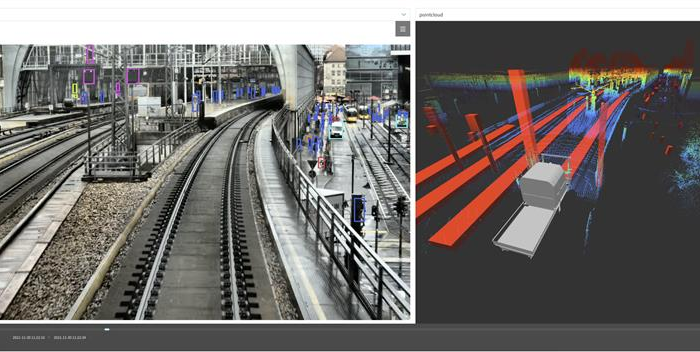
The Vehicle Data Logger is specifically designed for use in the railway sector and enables reliable capture and storage of large amounts of data. Those interested in the products can find more information on the project website.
What advantages does using the Data Factory offer for the railway system?
The Data Factory provides the foundational data for fully automated train journeys. This can be expanded step by step: further vehicles with obstacle detection systems can be connected to the Data Factory, creating a unified, synchronized data pool with multisensor data sets. AutomatedTrain already demonstrates today that the technology is operational – and with the right data, can be further developed beyond the initial project.
How far has the Data Factory subproject progressed, and what milestones are next for the overall AutomatedTrain project?
We are currently trialing and further developing the Vehicle Data Logger using our Dynamic Mock Up – a test platform deployed on the Havelländische Eisenbahn in Berlin-Spandau, simulating the future test vehicle BR430. Initial sensor data is already being recorded there, and wireless data transmission to the Touchpoint is working well. In parallel, the Logger is under test in accredited laboratories, aiming to achieve all necessary certifications by the end of Q3 2025.
A key milestone for the entire AutomatedTrain project is the conversion of both test vehicles (Mireo from Siemens Mobility and BR 430 S-Bahn Stuttgart from Alstom), which is expected to be completed by September 2025. Vehicle integration on the BR430, including installation of all Vehicle Data Logger components, started in May this year.
The next major step is commissioning the Touchpoint in Esslingen, planned for late 2025. Starting January 2026, the BR430 test vehicle will be in service on the Stuttgart S-Bahn network, with sensor data recorded daily and automatically transferred via the Touchpoint to the Data Center for further analysis and application.
After successful project completion, industry partners can immediately begin series development phases based on the results achieved. Digitale Schiene Deutschland is thus sending crucial signals to the sector and laying the foundation for such systems to be ordered by railway operators from industry in the near future.
AutomatedTrain is funded by the Federal Republic of Germany and the European Union. Funding providers are the Federal Ministry for Economic Affairs and Climate Action, on the basis of a decision by the German Bundestag, as well as the European Union.
